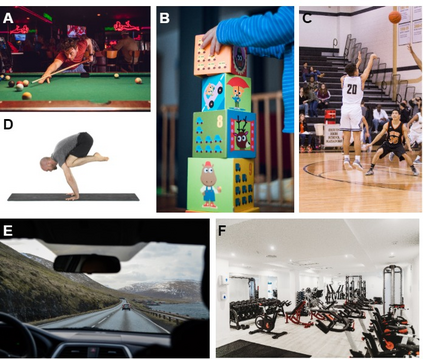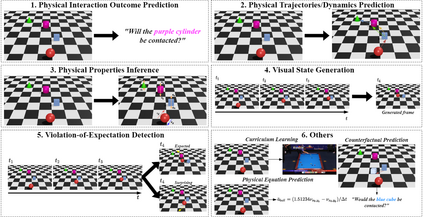Research in cognitive science has provided extensive evidence of human cognitive ability in performing physical reasoning of objects from noisy perceptual inputs. Such a cognitive ability is commonly known as intuitive physics. With advancements in deep learning, there is an increasing interest in building intelligent systems that are capable of performing physical reasoning from a given scene for the purpose of building better AI systems. As a result, many contemporary approaches in modelling intuitive physics for machine cognition have been inspired by literature from cognitive science. Despite the wide range of work in physical reasoning for machine cognition, there is a scarcity of reviews that organize and group these deep learning approaches. Especially at the intersection of intuitive physics and artificial intelligence, there is a need to make sense of the diverse range of ideas and approaches. Therefore, this paper presents a comprehensive survey of recent advances and techniques in intuitive physics-inspired deep learning approaches for physical reasoning. The survey will first categorize existing deep learning approaches into three facets of physical reasoning before organizing them into three general technical approaches and propose six categorical tasks of the field. Finally, we highlight the challenges of the current field and present some future research directions.
翻译:认知科学研究提供了广泛的证据,证明人类在对来自噪音感知投入的物体进行物理推理方面具有认知能力。这种认知能力通常被称为直觉物理学。随着深层学习的进展,人们越来越有兴趣建立能够从特定场景进行物理推理的智能系统,以便建立更好的人工智能系统。因此,许多当代为机器认知而模拟直觉物理学的方法都受到认知科学文献的启发。尽管在机器认知的物理推理方面做了各种各样的工作,但很少进行审查,以组织和组合这些深层学习方法。特别是在直觉物理学和人工智能的交汇点,有必要对各种想法和办法进行理解。因此,本文件全面调查了在直觉物理学激发的深层学习方法方面的近期进展和技术,以便进行物理推理。调查将首先将现有的深层学习方法分为物理推理的三个方面,然后将其分为三种一般技术方法,并提出实地的六项明确任务。最后,我们强调当前领域的挑战和目前一些未来研究方向。






